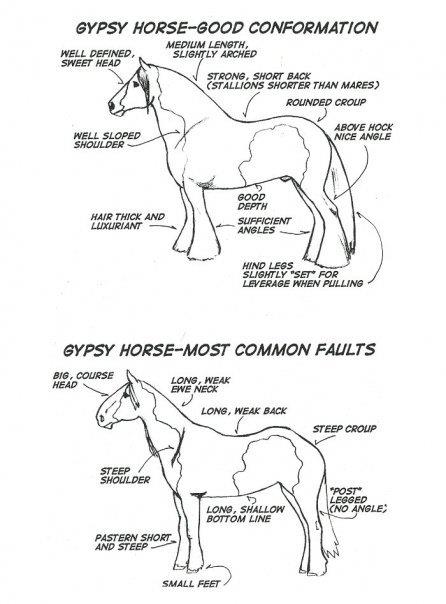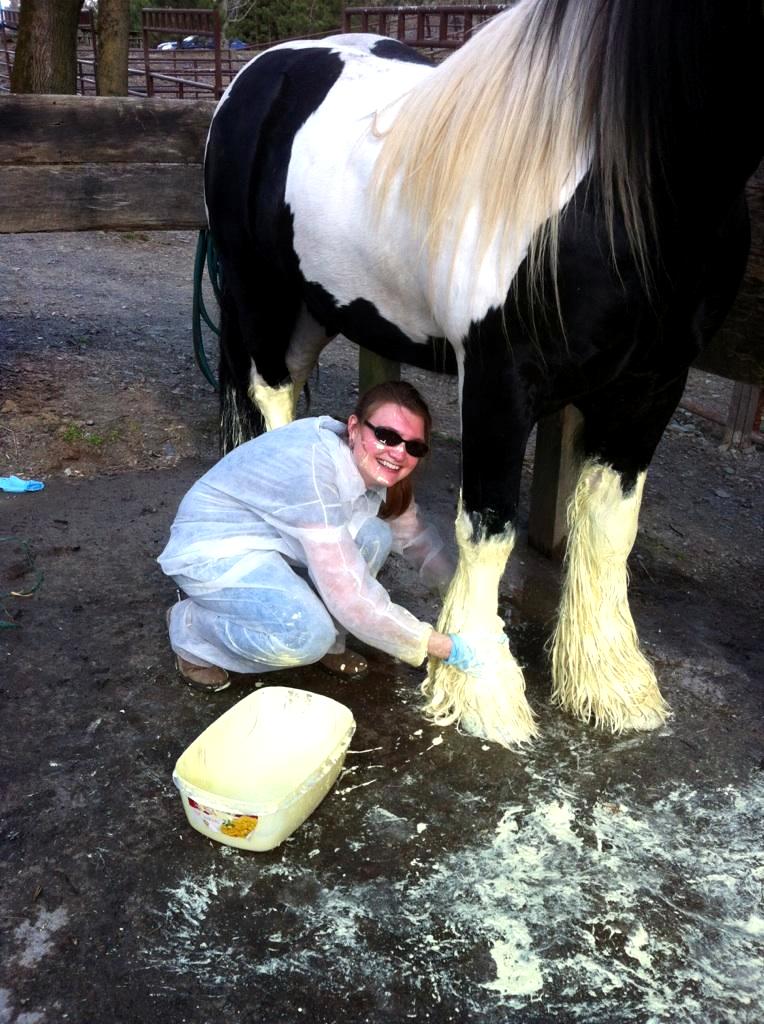
| Home * About Us * About the Gyspy Horse * Stallions * Mares * For Sale / Breeding Contracts * Contact Us | |||||||||||
About the Gypsy Horse: What is it about the Gypsy Cob, Gypsy Horse, Tinker, Romany, or Gypsy Vanner that makes it so special? So magical? What can they do? Well, the answer to the third question helps to answer the first two. The Gypsy horse is one of the most versatile horses. They were bred to haul the ornate Gypsy Vardos that the Romany Travelers call home. However, they can also trail ride, western pleasure, English pleasure, dressage, jumper, western sports (Romeo and I make quite the barrel racing team at local fairs!), and their broad back makes for quite a comfortable bareback ride. They are referred to as the golden retriever of horses for good reason, they want to please and therefore pick up new commands with ease. The Gypsy travelers needed a small draft like horse strong enough to haul their wagons and vardos, and beautiful enough to compliment these gold detailed ornate caravans. Each member of the travelers’ family has a job to do. The job of handling the horses is left to the children; which meant that the Gypsy’s horse needed to have a calm and gentle temperament. If it didn’t it was sold off for meat, because a horse like that had no business being a part of a Gypsy family, and therefore any temperement issues were bred out of the Gypsy Horse. They needed a horse that would be an easy keeper, often tied off to graze on the grass along the roadside, the caravan did not spare any room for feed. During the war, the government took it upon themselves to take any solid color horse for combat, and therefore, if the gypsies bred a colorful tobiano horse, they were sure to be safe to maintain ownership of their horses. You may be asking yourself, how did they produce this breed? It was through careful selection of a combination of Shire, Clydesdale, Dales Pony and Fell Pony. In order to get the full beautiful silky feather you needed to breed a sire and dam both with generous amounts of quality feather, because feather is recessive. I often hear people comment about breeding their mare to my stallion to have a feathered quarter horse or appaloosa. I chuckle with them, and then sadly have to tell them that it won’t happen as they picture it. Gypsies throughout history kept no records. A Gypsy could look at a horse and tell you which family bred it. However, they cannot always tell you who its sire and dam are. The look, temperament, and conformation is what is important to the travelers… can this horse serve his purpose to the family? Gypsies prefer not to leave a paper trail. Each family knows what type of horse they want to breed, and that is what is important to them. This is a strange concept for Americans who have always kept impeccable records of a horses bloodlines, and therefore more and more you will start to see some history, but it will usually only go back a generation or two, and many imported will not have a sire or dam noted. The Gypsy’s horse is his most valuable possession, and if you have been reading up on this horse I am sure you have heard the proverb “Gypsy Gold does not Chink and Glitter… It Gleams in the Sun, and Neighs in the Dark” For a Gypsy’s field is his bank holding his most valuable possessions. Gypsy Luck Traits of a Cob that the Gypsies say are lucky: *Blue Eyes *One white ear, one black ear… you may see the term “lucky ears” *A mustache *A small pinpot head They also say it is bad luck to cut any hair of a Gypsy Horse! I love every hair my boy has! You will most often see Gypsies Shown in their full natural state, including a braid for a bridle path as opposed to a trim.. |
|||||||||||
|


